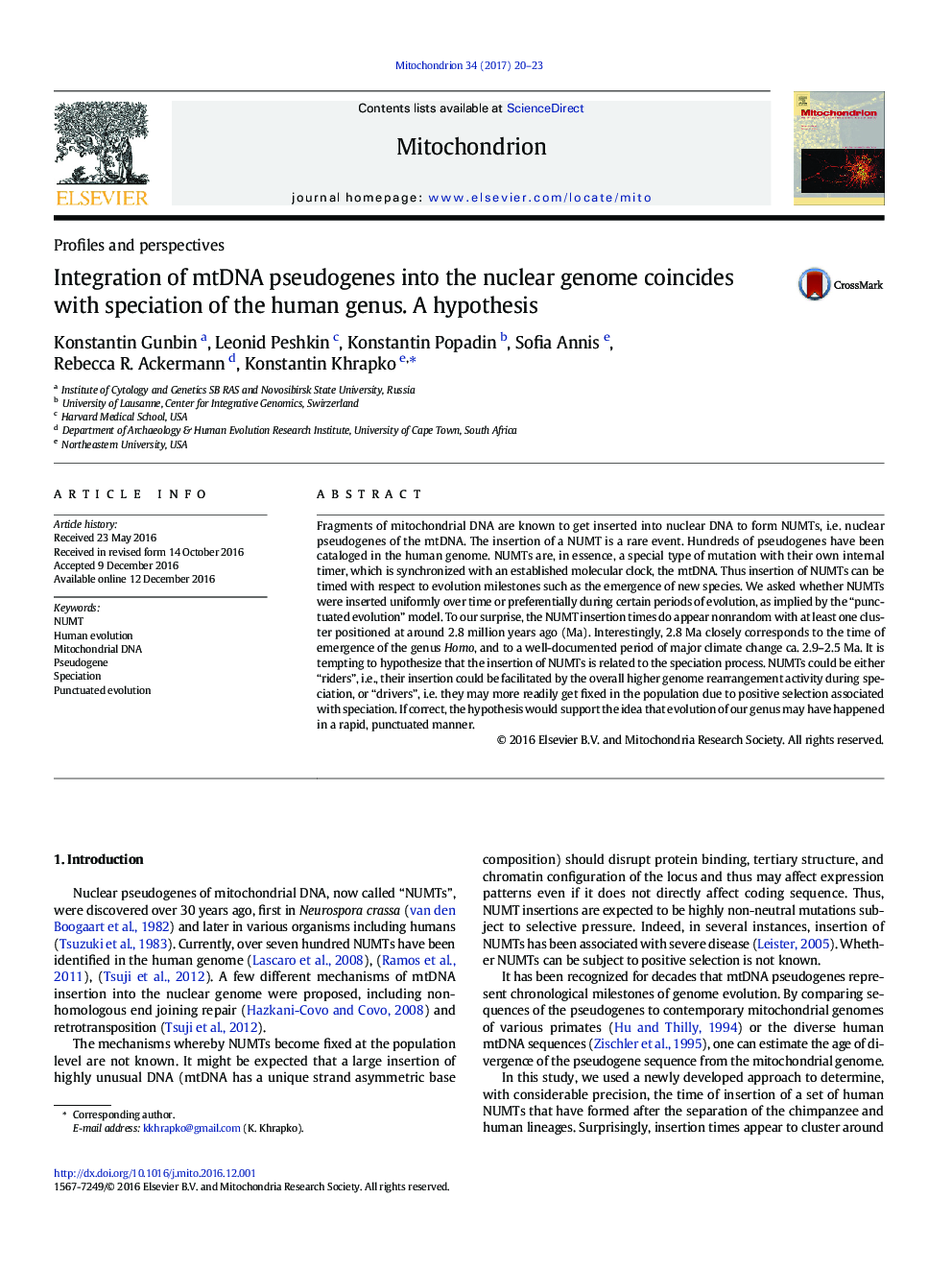| کد مقاله | کد نشریه | سال انتشار | مقاله انگلیسی | نسخه تمام متن |
|---|---|---|---|---|
| 5519686 | 1544410 | 2017 | 4 صفحه PDF | دانلود رایگان |

Fragments of mitochondrial DNA are known to get inserted into nuclear DNA to form NUMTs, i.e. nuclear pseudogenes of the mtDNA. The insertion of a NUMT is a rare event. Hundreds of pseudogenes have been cataloged in the human genome. NUMTs are, in essence, a special type of mutation with their own internal timer, which is synchronized with an established molecular clock, the mtDNA. Thus insertion of NUMTs can be timed with respect to evolution milestones such as the emergence of new species. We asked whether NUMTs were inserted uniformly over time or preferentially during certain periods of evolution, as implied by the “punctuated evolution” model. To our surprise, the NUMT insertion times do appear nonrandom with at least one cluster positioned at around 2.8 million years ago (Ma). Interestingly, 2.8 Ma closely corresponds to the time of emergence of the genus Homo, and to a well-documented period of major climate change ca. 2.9–2.5 Ma. It is tempting to hypothesize that the insertion of NUMTs is related to the speciation process. NUMTs could be either “riders”, i.e., their insertion could be facilitated by the overall higher genome rearrangement activity during speciation, or “drivers”, i.e. they may more readily get fixed in the population due to positive selection associated with speciation. If correct, the hypothesis would support the idea that evolution of our genus may have happened in a rapid, punctuated manner.
Journal: Mitochondrion - Volume 34, May 2017, Pages 20–23